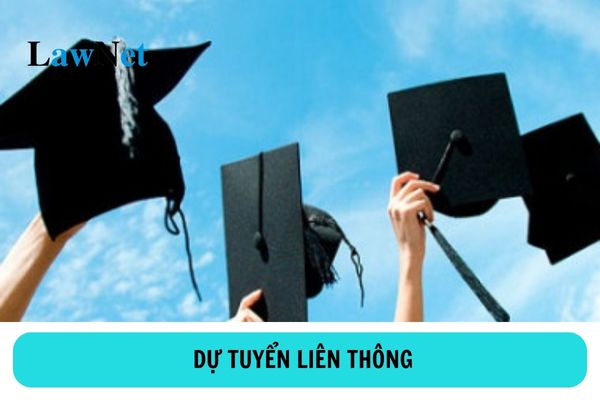What are the conditions for applicants for bridge programs between post-secondary schools or junior colleges and universities in Vietnam?
What are the conditions for applicants for bridge programs between post-secondary schools or junior colleges and universities in Vietnam?
Pursuant to Article 4 of Decision 18/2017/QD-TTg, the conditions for applicants for bridge programs between post-secondary schools or junior colleges and universities are as follows:
- Graduates of intermediate or college levels can continue to study specialized university programs, or different specialized programs if they meet the conditions of the training program.
- Applicants for bridge programs must ensure compliance with the current university admission regulations of the Ministry of Education and Training and possess one of the following diplomas:
+ Graduation diploma at the intermediate or college level issued by domestic training institutions. Holders of an intermediate level diploma must have studied and passed the required amount of high school cultural knowledge as regulated by the Ministry of Education and Training.
+ Graduation diploma at the intermediate or college level issued by foreign training institutions must be recognized according to the regulations of the Ministry of Education and Training or the Ministry of Labor - Invalids and Social Affairs.
+ For health sector transfer training, applicants must hold an intermediate or college diploma in the health sector. Specifically, holders of a Physician diploma can apply for transfer to undergraduate programs in General Medicine, Traditional Medicine, Preventive Medicine, and Dentistry; holders of an intermediate or college diploma in Pharmacy can apply for transfer to the undergraduate program in Pharmacy.

What are the conditions for applicants for bridge programs between post-secondary schools or junior colleges and universities in Vietnam? (Image from the Internet)
What are the regulations on bridge programs between post-secondary schools or junior colleges and universities in Vietnam?
Pursuant to Article 6 of Decision 18/2017/QD-TTg, the regulations on bridge programs between post-secondary schools or junior colleges and universities are as follows:
- Transfer admissions between intermediate, college, and university levels are conducted through entrance exams, admission review, or a combination of both, as decided by the head of the higher education institution according to current university admission regulations of the Ministry of Education and Training.
- Applicants with an intermediate diploma applying for university level transfer are eligible to participate in the annual university admission examination along with high school graduates at the higher education institution.
- Applicants with a college diploma applying for university level transfer may participate in entrance exams or special transfer admission examinations organized by the higher education institution, with subjects including basics, foundation subjects, and specialized or vocational practice. The implementation of admission, review, and notification of successfully admitted applicants follows the current university admission regulations of the Ministry of Education and Training.
For health sector transfer training, only those already holding a professional practice certificate and ensuring entry quality standards (each subject scored at least 5 out of 10) can participate in special entrance exams.
Who has the authority to decide on bridge programs between post-secondary schools or junior colleges and universities?
Pursuant to Clause 1, Article 3 of Decision 18/2017/QD-TTg, the regulations are as follows:
Authority to decide, report, and publicize the transfer training admissions
1. Authority to decide the transfer training admissions
The head of the higher education institution is authorized to issue decisions on transfer training admissions between intermediate, college, and university levels when all conditions stipulated in Article 2 of this Decision are met. The decision on transfer training admissions must clearly state the name of the discipline, level, and form of transfer training, as well as the admission method.
- Reporting and publicizing the decision on transfer training admissions
Within 03 (three) working days from the date the decision on transfer training admissions is issued, the higher education institution must send a report directly or via post to the Ministry of Education and Training, and simultaneously publicize the following contents on the institution's website:
a) The decision on transfer training admissions of the higher education institution;
b) Copies of decisions issued by the higher education institution or the competent authority:
- Decision to open a full-time university training discipline for the discipline that decides on the implementation of transfer training admissions.
- Decision on issuing the credit-based training program for the discipline that decides on transfer training admissions and the decision on admitted candidates in the credit-based undergraduate program for 03 (three) consecutive batches for the higher education institution that decides on full-time transfer training admissions.
- Decision on issuing the undergraduate training program for the discipline that decides on transfer training admissions and the decision on admitted candidates in full-time undergraduate programs for 03 (three) consecutive batches for the higher education institution that decides on full-time transfer training admissions in the arts sector.
- Decision on recognizing graduates of a course that implements full-time undergraduate training programs, in the case of transfer training programs in the health sector.
- Decision on issuing regulations on recognizing the value of academic results and credits accumulated by learners that are exempted when implementing transfer training programs (including the access address to the higher education institution's website).
Thus, the authority to decide on bridge programs between post-secondary schools or junior colleges and universities lies with the head of the higher education institution.

